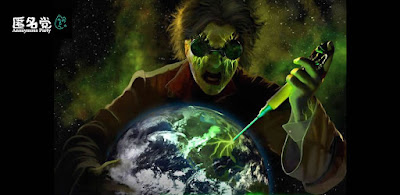ドイツ西部ルートビヒスハーフェン(Ludwigshafen)にある世界大手の化学メーカーBASF本社の工場で17日、爆発があり、2人が死亡、6人が重傷を負った他、2人が依然行方不明になっている。
同社がツイッター(Twitter)で発表した。
http://www.afpbb.com/articles/-/3104699
以下日本語WIKIには無い箇所・・・
World War II
In 1925, BASF merged with Bayer, Hoechst and three other companies to form I.G. Farbenindustrie AG. Between 1933 and 1945, I.G. Farben played a central role in the Nazi economy. During World War II, the company manufactured poison gas, Zyklon B, used at extermination camps and employed forced and slave labor. Several company directors and senior managers were tried for war crimes and crimes against humanity.IG Farben
As a result of this monopoly[clarification needed], BASF was able to start operations at a new site in Leuna in 1916, where explosives were produced during the First World War. On 21 September 1921, an explosion occurred in Oppau, killing 565 people. The Oppau explosion was the biggest industrial accident in German history. Under the leadership of Carl Bosch, BASF founded IG Farben with Hoechst, Bayer, and three other companies, thus losing its independence. BASF was the nominal survivor, as all shares were exchanged for BASF shares prior to the merger. Rubber, fuels, and coatings were added to the product range. Following the appointment of Adolf Hitler as Chancellor in 1933, IG Farben cooperated with the Nazi regime, profiting from guaranteed volumes and prices, and from the slave labor provided by the government's Nazi concentration camps. IG Farben also achieved notoriety owing to its production of Zyklon-B, the lethal gas used in Nazi extermination camps. In 1935, IG Farben and AEG presented the magnetophon – the first tape recorder – at the Radio Exhibition in Berlin.[7]The Ludwigshafen site was almost completely destroyed during the Second World War and was subsequently rebuilt. The allies dissolved IG Farben in November 1945.
Both the Ludwigshafen and Oppau plants were of strategic importance for the war because the German military needed many of their products, e.g. synthetic rubber and gasoline. As a result, they were major targets for air raids. Over the course of the war, Allied bombers attacked the plants 65 times.
Shelling took place from the autumn of 1943 on, and saturation bombing inflicted extensive damage. Production virtually stopped by the end of 1944.
Due to a shortage of male workers during the war, women were conscripted to work in the factories, and later prisoners of war and foreign civilians. Concentration camp inmates did not work at the Ludwigshafen and Oppau plants.
In July 1945, the American military administration confiscated the entire assets of IG Farben. That same year, the Allied Commission decreed that IG Farben should be dissolved. The sites at Ludwigshafen and Oppau were controlled by French authorities.
Following extended negotiations, the Badische Anilin- und Soda-Fabrik AG was re-founded on 30 January 1952 as one of the five successor companies of IG Farben.
ツィクロンB (独: Zyklon B, 英: Cyclon B) は、ドイツのシアン化合物系の殺虫剤の商標である。しかし第二次世界大戦中にナチス・ドイツによるホロコーストで、強制収容所のガス室で毒ガスとして用いられたため、現在は農薬としては用いられておらず、その他の使用(シラミ除去など)に対してもユダヤ人団体からの抗議で商用に至っていない。
カナ表記は一般的には「チクロンB」ともされ、英語読みで「サイクロンB」とも言うが、全て同じ薬剤である。
、、、(爆wwwwwwwwwww

1 件のコメント:
ヒトラーの生家、取り壊しへ オーストリア政府が発表
http://www.cnn.co.jp/fringe/35090687.html
コメントを投稿